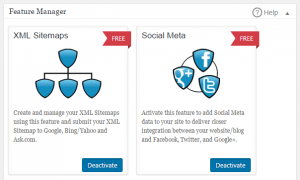Understanding the XML Sitemap

Understanding the XML Sitemap
Any website needs to be indexed in order for a search engine to read or crawl through all the information the website has. A search engine needs to access a sites data in order for it to acknowledge it as a live site. This does not necessarily affect the Search Engine Optimisation or its ranking but the sitemap needs to be there for the rankings to happen.
XML stands for Extensible Markup Language and is a newer development on the older HTML version. It is now the preferred format used by administrators and search engines.
An xml sitemap is basically a map of a website. It tells the search engine all of the data the website has and where to find it. The better the sitemap is the easier it is for the search engine to read the data and crawl the website intelligently.
A link to the sitemap can usually be found on any website and the link usually leads to a list of URLs and data. The data is often listed in order of importance (e.g. homepage first) and also includes the site content and when it was last updated.
Reasons why you need a sitemap include:
Search engines love URLs as they enable them to crawl the site and understand its layout.
All of your wonderful content will become irrelevant if your site is not indexed and this will ultimately have an overall effect on your Search Engine Optimisation and rankings.
XML also allows the user to inform a search engine of other content such as videos, images, news updates and features like mobile information.
The sitemap is at your beck and call meaning you can access it whenever you need to. This means you can adapt your URLs so nothing gets overlooked giving you a strong website.
It is essential to your website; it acts as a foundation to the build of the website which essentially leads to the ranking result.
If you use word press, there are several ways to create an XML sitemap in WordPress. There are several plug ins including All in One SEO and Yoast, two of the most popular, which automatically generate XML sitemaps.
To add a sitemap to your WordPress site, first thing you need to do is install and activate the SEO plugin. By default, WordPress SEO does not enable XML sitemap functionality, so you will have to turn it on. For example, in All in One SEO, select the Features option and from the sub menu choose XML sitemaps.

Additional features available in the feature manager include support for custom robots.txt files, a settings import and export tool, and a bad bot blocker.

Whether you are just starting up your business or have an existing website which isn’t doing a great deal for you, then call Direct Submit today and let us help you make your website stand out from the crowd. As experienced Internet Marketing and SEO consultants we will be able to help you make the right choices and decisions to help you get your product or service noticed online.
An effective SEO strategy will make your website easy to find for users and search engine robots. SEO helps the search engines to understand what each page on the website is about, therefore content strategy plays a big role in the SEO tactics. Search Engine Optimisation (SEO) should be an essential part of your businesses marketing strategy. Put simply, its job is to increase your enquiries and to make sales. Properly applied, SEO will help your companies website appear higher up the natural search engine rankings for targeted key phrases. This is where Direct Submit can help you and your business.
As leading UK Internet Marketing and SEO consultants, we are committed to providing you with the highest level of service and expertise. All our clients are unique and each receives customised strategy that utilises today’s best practices for your business.
At Direct Submit, we believe every company is unique and we deliver a specific range of SEO services designed to help ensure the optimum performance of your website. Call us today on 0845 2722350 and get your website working harder for your business.


